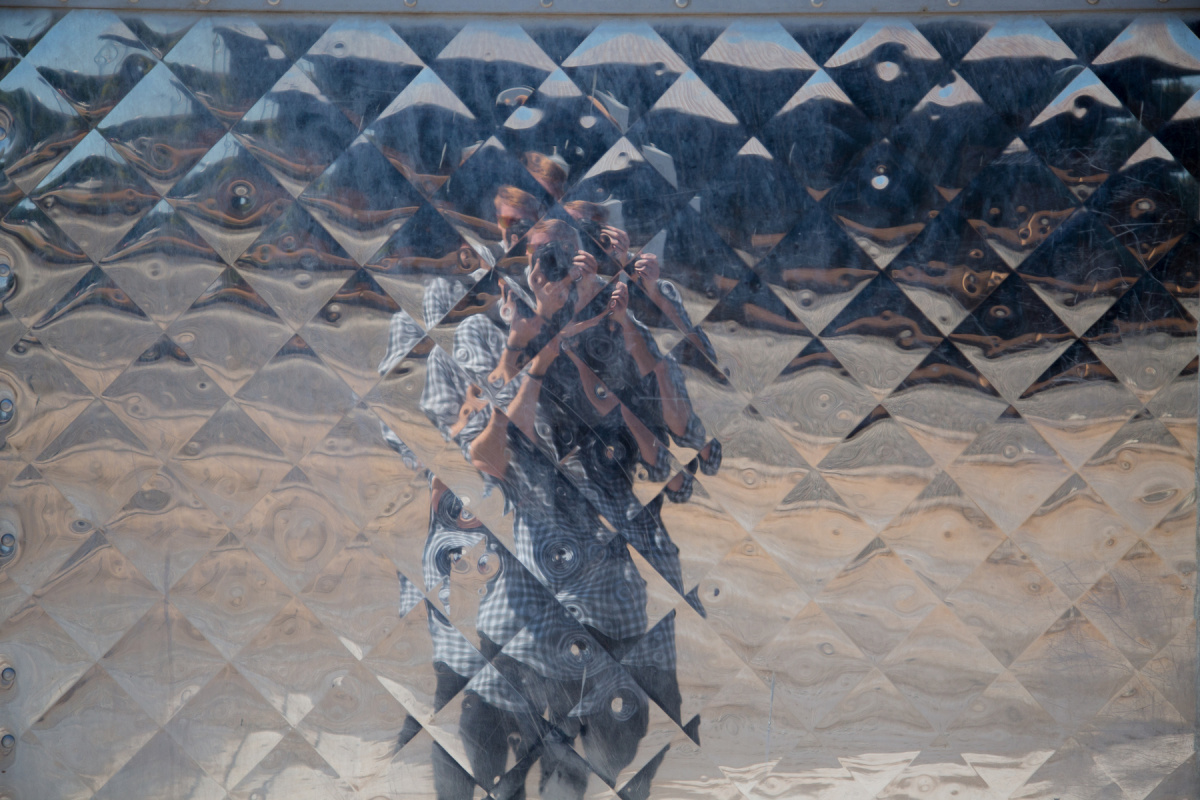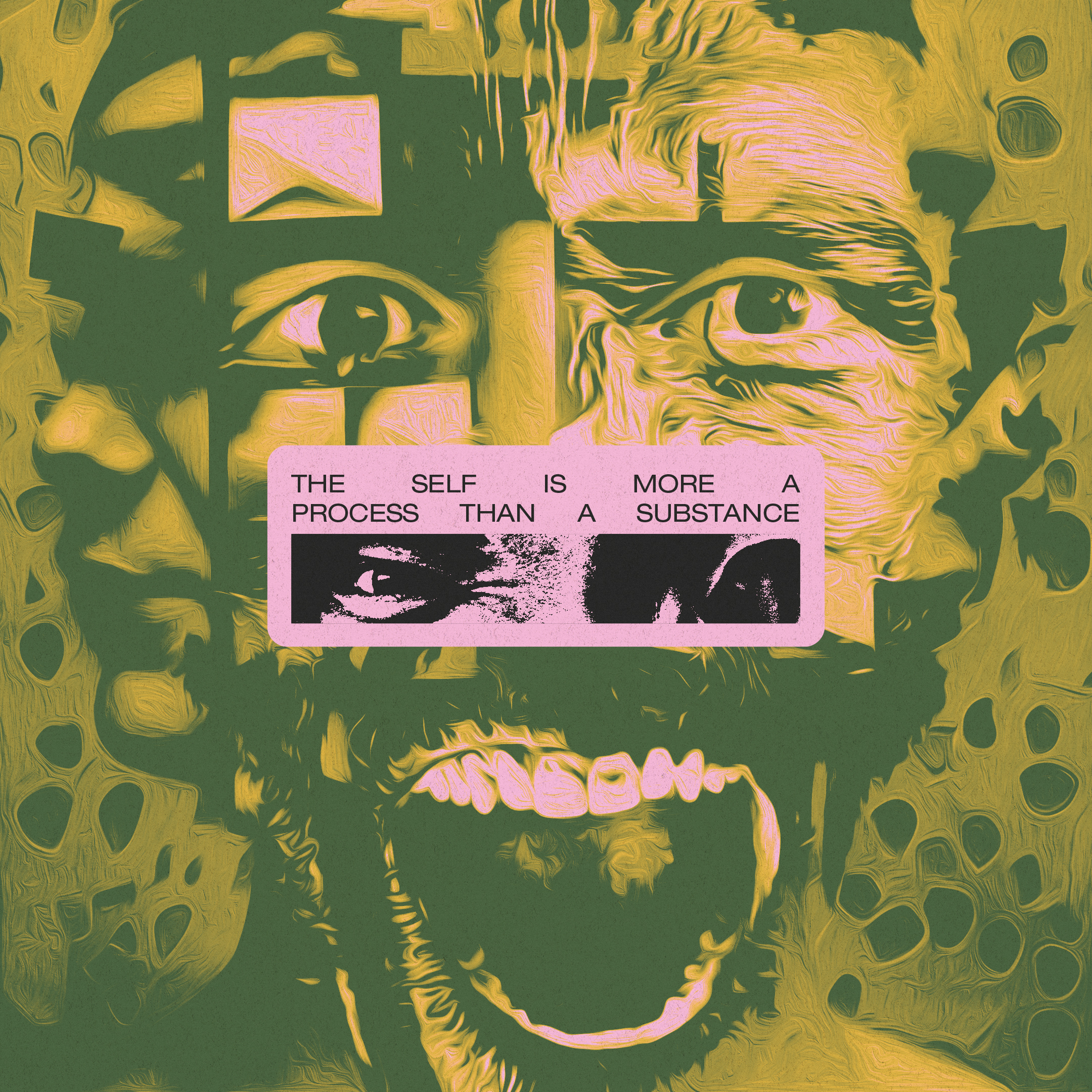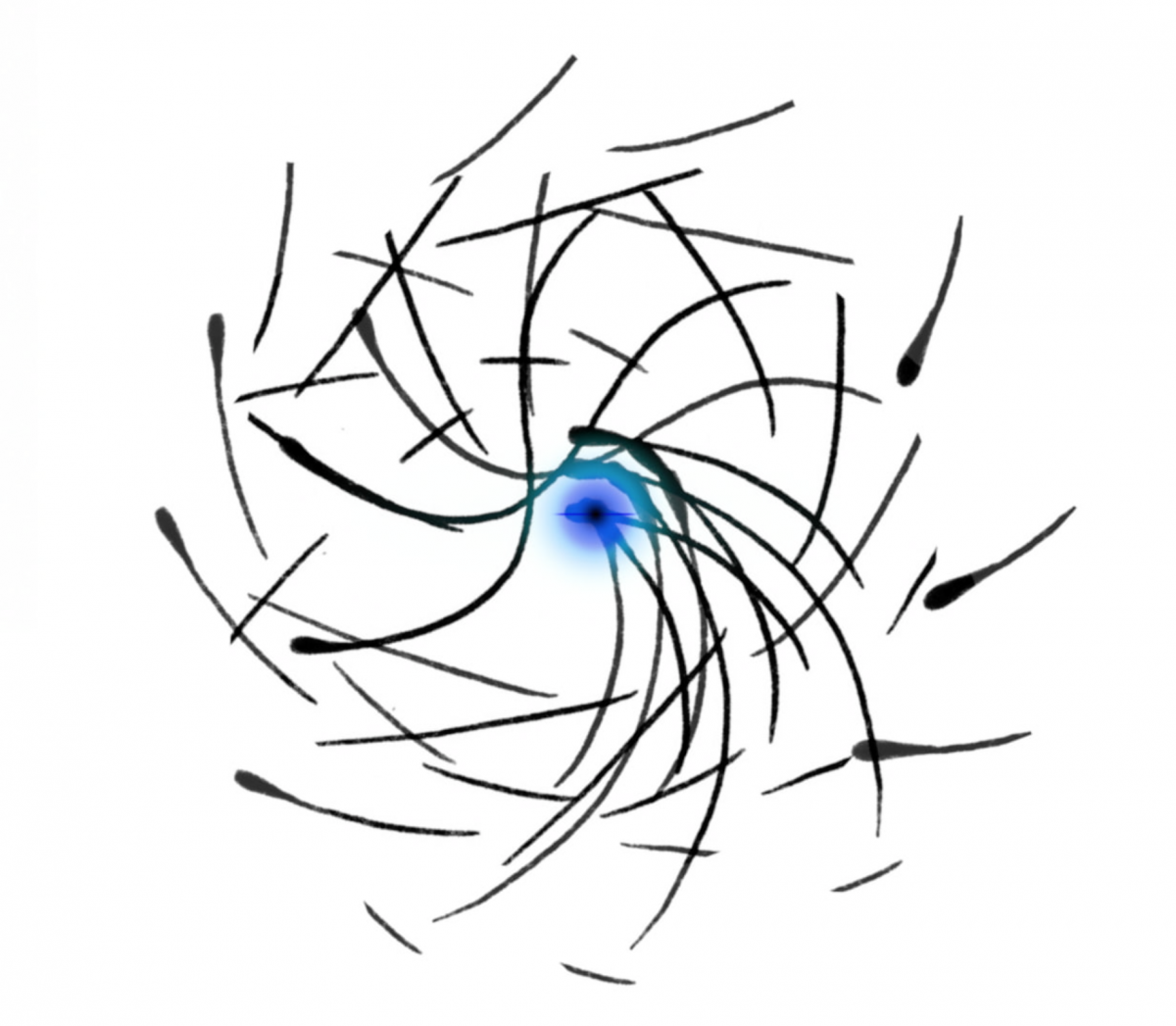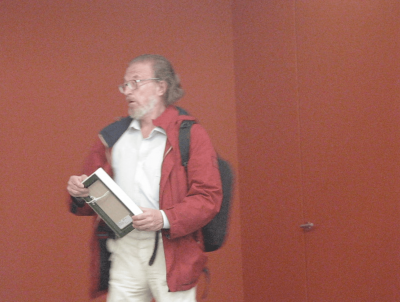
The Silent Mass I Carry Around
Even at a time of fragmented digital selves, people often align with a single self-description, suppressing their multiplicities. In this essay, the writer and musician Philipp Rhensius attempts to re-sample the embattled term (self-)curation, in search of its supposed emancipatory potential.
If it had been up to my parents / I would have become: like something / Not just: something / Now / every day / I hope for the contrary and struggle with the silent mass I carry around
When I listen to a pop song, no matter if I like it or not, I feel enclosed. I’m exposed to a meticulously constructed world: there is a beginning and an end. When I listen to a DJ mix, I feel unbound: there are not one but many worlds of which I can usually not tell when one has started and one has finished. No matter whether I like one world (or song) or not, I feel at ease, because it will change at any second. While identification with a song is constrained, with a DJ mix it is always already fleeting. In a club, or on a sofa at home listener is kept in a state of constant becoming.
Autobiographical rewind to a point when I didn’t know what a DJ mix was, let alone the philosophical idea of constant becoming. I grew up in a small town among people whose biographies were linear. There was the plumber, the teacher, the nurse, the shift worker, and the policewoman. Despite their differences, they all shared a well-known telos: a person, once adult, stays the same until their passing. If asked «what do you do?», they would reply effortlessly. They assumed a self which had one single identity that needed to be defended at all costs. When asked «what would you like to do?» as a teenager, I could never answer, or maybe I didn’t want to, dreaming of an escape from the force of a pre-determined imagination which people regularly defended with violence. This occurred whenever there was an assumed need to defend the collectively imagined inside from a threat from an «outside». While physical violence was something one would experience as a child and teenager, psychological violence was enforced more subtly, probably often even unintended, as when asked «what do you do?», and then judged or ridiculed when the reply didn’t meet expectations. Maybe this is one reason why, as someone who barely made it through school, who worked in a factory, as a garbage collector, salesman, homeless assistant, waiter, newsagent, clerk, editor, and telephone marketing agent, the question gives me shivers even now.
A Human Template
Today, I generate my income as a writer, musician, journalist, sound artist, editor, curator, and label owner. At family gatherings, parties, or random conversations, I code-switch like a broken traffic light. I still don’t feel at home in a world that is run by people with «real» jobs, acclaimed titles, or inherited wealth. I still struggle to describe what I do, not only because it immediately determines a class affiliation. It also grants a category the power to define a person. Having since studied sociology, I’m now aware that the mindset of the people in my childhood was only a symptom of a deeply ingrained condition. It wasn’t personal. It was produced by forces outside of an individual’s impact field. Some called it alienation, or like Marx, subsumption: the subordination of social relations to the labor process (Marx 1976). Put differently, subsumption describes how the individual is ruled by a universal force indifferent to any particulars or individuality. Some years later, after graduating, I found a language that would be more precise and accurate than the white male academic canon I was exposed to, which not only lacked empathy but also failed to include affect, gender, and colonialism as driving social forces. This new language was spoken by scholars such as Silvia Wynter.
In her anticolonial pursuits, the Jamaican philosopher Silvia Wynter describes how the very category of «Man» as a supposedly universal figure is drawn from a narrow definition: a «liberal/neoliberal [...] homo oeconomicus’s biocosmogonically chartering origin narrative» (McKittrick 2015, 38). This has served as a template that, over centuries, naturalized a model of human idealization in the Western world (Wynter 2001 and Reed 2019). It was, one could say, the dominant way of «curating» people. The French philosopher Gilbert Simondon writes: «In the 16th century, human beings were enslaved to intellectual stereotypes; in the 18th century, they were limited by hierarchical aspects of social rigidity; in the 20th century, they are the slave of their dependence on unknown and faraway powers that direct them» (Simondon 2017, 101).
No wonder that having a quick answer to describe oneself is a refuge that promises safety and shared commonality. And not having an answer creates friction between who one is – a being struggling with the silent mass one carries around – and who one is supposed to be, according to human idealizations. Once I had internalized this kind of weak otherness in my youth, I turned into an anti-person, attempting to refuse career-driven fantasies or to take part in the common «structure of feeling» (Williams 1977), the affective, mostly implicit, collective experience of consciousness and relationships. I couldn’t identify with the values, the jokes, the music, the definition of «normality» I was surrounded with and was excluded (or excluded myself) from a shared commonality. I felt alienated from mundane life, experiencing a certain kind of dissociation. A term that the German writer Maxi Wallenhorst defines as «one of the concepts describing complications in linking personal experience to the social world», which «functions to make relatable where a relation isn’t recognizable as relation» (Wallenhorst 2021).
Hunted by Determined Thinking
Needless to say, as a white male who outwardly matches this ideal image, my occasional, non-pathological dissociation shouldn’t be compared to the life-threatening struggles of PoC, Black and LGBTQIA+ people, whose entire bodies don’t match with the supposed ones required to live in a commonality. I will certainly not preach a pastoral idyll of a «human universalism» here, as has been done by colorblind people who seek to exonerate themselves from their inevitable complicity in the system. Nevertheless, there is a common, albeit differently experienced, exclusion mechanism at work that must be unmasked from all angles. The dominant ideal of a «human genre» forces everyone to align with seemingly neutral categories, transposing a model of being into a generalized standard that keeps one enclosed.
This deeply rooted binary is often already communicated at an early age. It is obsessed with borders, dividing the world into a «safe inside» and a «hostile outside» to enforce an idea of purity. In school, and later in university, I was relentlessly taught how important it is to define disciplinary limits even within similar fields such as humanities and social sciences. I was haunted by an ideology of externally determined thinking. Every sphere I entered always entailed its own already curated identification. To meet certain expectations of some kind of purism, as if soiling the intuitive skills of making music with too much formal thinking or vice versa, I stopped opposing and slowly started obeying these rules, simply for practical reasons. There was no time, and therefore no space, to think further. Whenever I worked in a factory, I needed to lock out the sociologist; whenever I wrote journalism, I needed to lock out the artist; whenever I emptied trash cans, I needed to stop thinking about pollution; whenever I made music, sound art, or wrote poetry, I needed to lock out the journalist; and when I was «producing» content for an agency, I needed to lock out any of the above. The dominance of categorization leaped into every aspect of my life.
Curating the Self
Recently, I stumbled upon a phrase in Andreas Reckwitz’s Society of Singularities. According to this sociologist, people tend to curate their life. This seems banal and yet precise. Arguing about the quest for an authentic singularity in contemporary society, he writes: «In the life of singularization, life is not simply lived, it is curated. The late-modern subject performs one’s individuality in front of others who become the audience» (Reckwitz 2020, 9). Put differently, one constantly creates a museum of one’s life for others to walk through, hoping to appear singular. To those who are opposed to binary self-definitions, this might even be a refuge, since the internet seemingly enables a pluralization of the ego, morphing it into fragments that form an anonymous collectivity. But curating a life in Reckwitz’s sense is not a heroic victory of the self, liberated from its chains. It is a by-product of cognitive and racial capitalism multiplying and distributing differences for profit. A system that, at least in the Euro-American sphere, relies on a nonconformist (but still very white-male-centric) and hyper-flexible self that is, if we follow Eve Sedgwick’s (Sedgwick 2003) and Byung-Chul Han’s (Han 2018) notion of «smoothness» as a prevailing neoliberal aesthetic generating an ideal branded self that seeks to be, at best, free of any texture or rough edges. It constantly holds in check what psychoanalysts might call the abject, that is, everything that lies outside and delimits what must be excluded from the body. This self has unknowingly internalized the remnants of counter-cultural ideas about subjects that are seemingly liberated from the constraints of time-clock-work, religion or binary gender ideologies.
I won’t indulge in the battle over the term «curation», decried as a new buzzword by some art or music festival curators who are afraid of losing authority over it. Rather than using the term in Reckwitz’s manner, to expose hidden powers working on the subject, I reassess the meaning of self-curation and twist the sociologists’ use of the metaphor of curating a self as simply denotative. What if curating the self is not the problem, but how, and, even more important: what is actually curated? What if the problem of curating the self is based on the dearth of categories for a self-curator to choose from?
The What: Destroying the I
To entangle the mass that is absorbed into an individual, one could start with a sentence from the book Gravity and Grace in which the philosopher Simone Weil writes: «There is absolutely no other free act which it is given us to accomplish – only the destruction of the I» (Weil 1952, 33). This was in the late 1930s, and in the following decades, people have been constantly using the notion as a springboard. For the Italian philosopher Rosi Braidotti, the «I» that Weil attempted to destroy is not a monadic entity in the first place. Rather, it is «a collective assemblage of complex relations that displace the centrality of ego-indexed notions of identity» (Braidotti & Saleri, 2010). She coined it the nomadic subject: a «political fiction that allows one to think through and move across established categories and levels of experience: blurring boundaries without burning bridges» (Braidotti 2014, 181). The nomadic subject is post-identitarian: it allows multiple ways of belonging, each depending on where one’s particular location is. In an interview, Braidotti says: «We have to map out the alternative cartographies of the non-unitary subjects that we are so that we can get rid of any idea that there are subjects that are completely unitary, belonging entirely to one location.»
Instead of being like something / I’m just something / I’m nobody and everyone / I’m an island and an archipelago / I’m a singularity and multiplicity / I’m an individual who is absorbed into the masses / I’m a mass that is absorbed into an individual
In his work on ontogenesis (the origination of an organism, both physical and psychological, e.g., moral development), Simondon investigates the concept of the pre-individual: «Unity and identity only apply to one of the phases of being, posterior to the operation of individuation [...] they do not apply to ontogenesis understood in its fullest sense, that is to say, the becoming of being as a being that divides and dephases itself by individuating itself» (Simondon 2009, 6). In short: the pre-individual is always more-than-one. The self doesn’t consist of one core but of «multitudes», as the poet Walt Whitman wrote in «Song of Myself» in 1873.
Yet, to understand oneself as a multitude – and that one is a product of centuries-long sociopolitical and psychological manufacturing – is still not enough to find more appropriate ways of curating oneself. Simply answering that one does many different things, when asked about what one does, still assumes that the self is static and is, therefore, more likely to be categorized. And, even more important, it might be just another form of romanticizing the shattering of the self prevalent in queer and gender studies which only, as Wallenhorst writes, «reduces non-integration to a formal gesture». Understanding oneself as a multitude puts the issue of the self at rest, and is not suitable for the constant altering of what we now learn is nomadic anyway.
The How: Accepting Unintelligibility
According to Braidotti, there is a gap «between how we live – in emancipated or post-feminist, multi-ethnic globalized societies, with advanced technologies and high-speed telecommunication, allegedly free borders and increased border controls and security measures – and how we represent to ourselves this lived existence in theoretical terms and discourses» (Braidotti 2011, 4). Put another way, we might live in a new era of dealing more flexibly with identities but are stuck with old concepts. It seems to be way more complicated to build your own worlds than to adapt to the ones that already exist. There are new tools to build new worlds, but no construction material.
What are the tools with which one can select and present the self in a way that facilitates new spaces for being and self-descriptions? What if my conflict is less rooted in too-many-options than in bad curation? Hasn’t curation long been a practice based on unequal power structures, an endeavor of a single person, whose authority would significantly lead selections, either according to some inherited principle of the past or market-driven logic of the now? An approach that seems increasingly outdated and is met with a gradual shift to more collective or process-oriented approaches, such as the occupation of the curation of Documenta by the collective ruangrupa from Jakarta, or the concept of Protozones in the art space Shedhalle show. Another example is the Norient Festival, whose artistic director Thomas Burkhalter decided to hand over the curatorial direction and decision-making to an international and multidisciplinary group of people in 2021. The group has been working internationally from various countries such as India, Lebanon, the United Kingdom, Germany, Kenya, Colombia, and Switzerland. It seems there is a growing interest in new forms of curatorship that allows the outside to leak in while keeping the inside together but malleable, and, even more important, relatable.
No person is an island floating in the ocean but a constellation of islands: an archipelago, connected to everything and everyone else. With such ideas, the Martinique philosopher Edouard Glissant confronts a Western mindset with the idea of multiple bodies. Being an archipelago, a person can’t exist without the other: they are interdependent. This relates to Braidotti’s nomadic subject which provides a cartographic tool that helps to compose mappings of situated and embodied social positions in an age of global hybridity. Merely juxtaposing the self’s variety is not enough to include multiplicity, incompleteness, and heterogeneity – one might need to change the way one relates to the different selves. Is it possible to curate a self less like a song than a DJ mix with its ongoing sequence of different tracks with different tempos and vibes?
I’m not just more-than-someone / but also always more-than-like-someone
According to Glissant, the Western idea of understanding a person is based on the «requirement for transparency» which enables the measurement of a person with an ideal scale to compare, and therefore to judge. Instead, he claims a «right to opacity» (2006, 190) to recognize difference. By stating that, for instance, I’m a sound artist when asked what I do, I make myself «transparent», and provide the person who asked with a list of generally known facts, ideas, and associations. I appear less like an individual self than a derivative of a general one. I’m a metaphor that stands for something else as there is no word for the designated. In contrast, by stating that «I do this and that which is connected to this and that», I make myself opaque. I appear unfamiliar. The other person is deprived of a basis of comparison, wandering in unmapped territory. To feel at ease with uncommon grounds might be the first requirement to understand otherness, not by making it transparent, but by accepting its unintelligibility, and thus overcoming the risk of reducing or normalizing the singularities of differences.
Verbs, not Sounds
No matter if it’s an art exhibition, a music festival, a DJ mix, or a person, a sensitive way of curation needs to take into account not only the ever-growing interdependencies of the worlds one inhabits, it also must accept its sheer contingency and blind spots, its cracks, and its seams. In her essay with the same name, Lauren Berlant introduces the concept of «genre flailing», «a mode of crisis management that arises after an object [...] becomes disturbed in a way that intrudes on one’s confidence about how to move in it» (Berlant 2018, 157). Flailing is a mode of in-between, a moment that is not defined yet. Transposing what Berlant calls «object» to the self, «genre flailing» offers a way of curating oneself in an ever-changing manner, a process that never stops and never finishes and is at ease if the desired, pre-formulated outcome is not realized. A bit like a good essay in which thinking with a problem is more important than thinking about one. Texts by Renee Gladman, Monika Rinck, Enis Maci, and Eliot Weinberger prove that the experience of reading is often as important as the supposed knowledge it generates. The form is essential to transport content in a particular way.
Curating oneself through the prism of the ideas discussed enables one to include multiplicity, incompleteness, non-unitariness and, not to forget, dissociation. It could become a style that not only juxtaposes different aspects of the self but also builds relations between them, without collapsing one into the other. A self that is more like a DJ mix than a song: an ongoing sequence of different things whose mood, genre, and tempo are constantly changing, and which sometimes overlap, sometimes diverge, and for a short time are even in sync, but are never seamlessly merged.
Curating oneself according to these ideas requires not only an ongoing practice that needs to be trained like a muscle but also saying goodbye to the fantasy of showing eternal loyalty to a truth once found. Yet, what, after all this theoretical spin-cycle, could this practically mean? Maybe one could treat the self more as a process rather than a substance. A substance is a thing that is unchangeable due to petrification that once took place. A process can change any second and is always temporarily interrelated with everyone and any- thing, always already escaping containment. One could use verbs instead of nouns. Instead of saying: «I’m a musician» or «I’m a writer», one could reply with a word that describes the most prevalent at that very moment, so «I make music», «I edit».
Curating oneself like this might create a different, more interdependent, and less ego-driven social identity. It might provide a double-vision that enables one to see oneself as a whole and in its many components and interrelated parts. But also from the inside and outside at the same time, attempting to exorcize the fear of «outer» influence. No self can keep itself pure by compartmentalization. And by perpetuating this idea, I guess, the self could open up to something that is still searching for its name.
List of References
This text has been published in the Norient book Politics of Curatorship: Collective and Affective Interventions, edited by Philipp Rhensius and Monia Acciari (Norient Books 2023).
Biography
Shop

Published on January 11, 2022
Last updated on May 28, 2024
Topics
How do musicians fill or widen the gap of feeling at home in a world that is radically unhomely?
From art exhibitions to djing to personal Instagram feeds, we look at curation from multiple perspectives.
What is «Treble Culture»? How does what one hears affect what one sees?
Special
Snap



